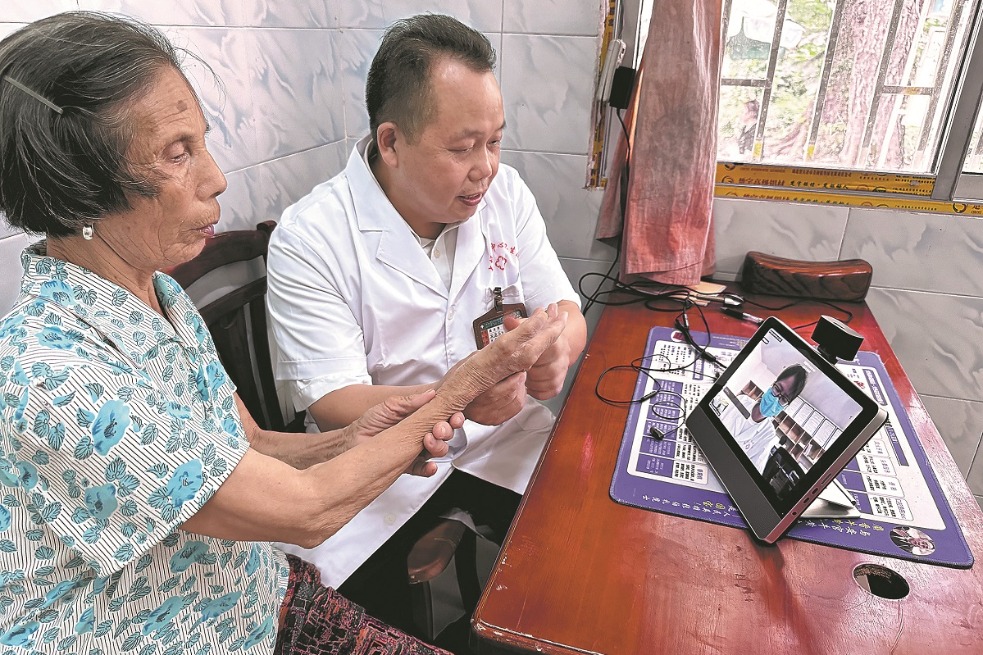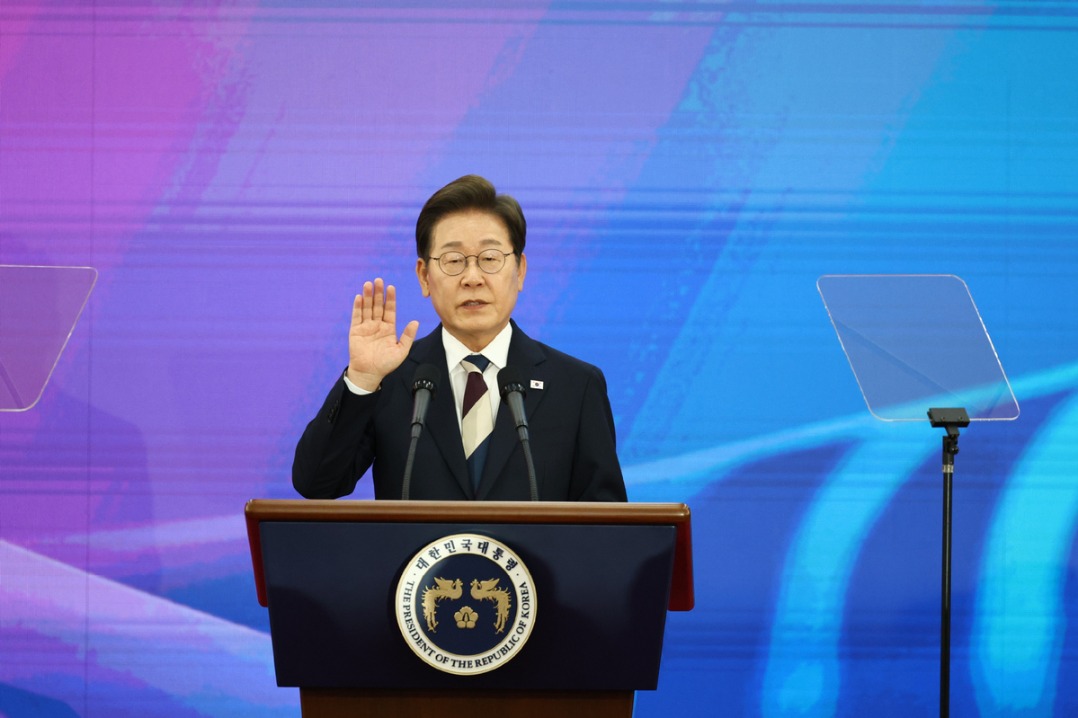Progressive paradigm
China's role in South-South cooperation prioritizes solidarity over hierarchy and development over dependency


As the world marks the 80th anniversary of the founding of the United Nations, it provides a timely reminder of the importance of solidarity, mutual respect and multilateralism in global development. In this context, China's expanding role in the South-South cooperation offers a revealing case study of how the Global South can reimagine cooperation — not as aid, but as partnership. Among China's many bilateral relationships, its cooperative efforts with Malaysia stand out as a model for mutual benefit, resilience and forward-looking regional integration.
Since establishing diplomatic relations in 1974, Malaysia and China have built a robust bilateral framework, increasingly aligned with the principles of South-South cooperation. This includes technical assistance, infrastructure development, trade facilitation and knowledge transfer.
Within the framework of the Belt and Road Initiative, China has supported multiple projects in Malaysia, such as the East Coast Rail Link, port development in Kuantan and various industrial parks. These are not mere infrastructure projects; they exemplify the South-South cooperation ethos — combining Chinese capital and expertise with local needs, priorities and human capital development.
One key area of impact has been technology and capacity-building. Malaysia has benefited from Chinese investments in the digital economy, including collaboration on its 5G rollout, artificial intelligence-driven smart city development and green energy. For instance, Huawei's regional operations in Malaysia have contributed to local skills development through training centers and scholarship programs, showcasing how technological cooperation can be localized to meet development goals.
Equally significant is the role of educational exchanges and people-to-people ties. Malaysia hosts a sizable Chinese diaspora and educational collaborations, such as the Xiamen University Malaysia Campus, and fosters deeper cultural understanding and long-term institutional ties. These softer dimensions of cooperation are often neglected but remain critical to the long-term success of South-South cooperation.
China's approach to South-South cooperation diverges markedly from traditional North-South aid paradigms. Rather than a donor-recipient model, China emphasizes mutual benefit, state sovereignty and non-interference — principles rooted in the Bandung Spirit.
A defining characteristic of China's South-South cooperation is its emphasis on infrastructure-led development. Through initiatives such as the BRI, China has invested in infrastructure across Asia, Africa and Latin America. From ports in Kenya to railways in Laos, this approach has filled critical gaps left by multilateral development banks and Western donors.
Another area of achievement is agricultural cooperation. China has extended technical training, demonstration farms and hybrid seed technology to multiple African and Southeast Asian nations. For example, through agricultural cooperation with African countries, China has trained over 9,000 technicians in crop science and irrigation, contributing to food security and climate resilience.
Importantly, China's South-South cooperation has increasingly aligned with global development goals, including the UN 2030 Agenda for Sustainable Development. Its engagement with triangular cooperation — where China works alongside UN agencies or the Organization for Economic Cooperation and Development countries to support third-party nations — is also growing, indicating a more integrated approach to global development norms.
As China continues to expand its role in South-South cooperation, three key recommendations emerge to enhance both impact and legitimacy.
First, China should deepen cooperation in areas, such as climate adaptation, public health, digital literacy and education. Developing a formal South-South cooperation agency or platform would help coordinate and evaluate projects, ensuring long-term sustainability and transparency.
Second, to address criticisms around environmental and social impacts, China could adopt more participatory development practices. This includes community consultations, third-party impact assessments and partnerships with local nongovernmental organizations. Adopting and enforcing stronger environmental, social and governance standards would align China's South-South cooperation model with evolving global expectations.
Third, China can play a catalytic role in creating knowledge-sharing platforms among Global South countries. Building a digital South-South institute or expanding platforms such as the China-Association of Southeast Asian Nations Information Harbor can facilitate the exchange of policy expertise, indigenous technologies and innovative governance models.
The 80th anniversary of the founding of the UN is a critical milestone to reaffirm the values of inclusive development and multilateral cooperation. In a world facing climate crises, economic fragmentation and geopolitical tension, South-South cooperation offers an alternative vision — one that prioritizes solidarity over hierarchy, and development over dependency.
China's South-South cooperation strategy aligns with this vision and can evolve to remain credible and future-proof. The country's increasing participation in UN-led programs and growing support for multilateralism are positive trends, especially amid concerns of rising global unilateralism.
Launched at the Shanghai Cooperation Organization Summit in Tianjin, the Global Governance Initiative seeks to promote the building of a more just and equitable global governance system and work together for a community with a shared future for humanity. The Global Governance Initiative emphasizes sovereign equality, international rule of law, multilateralism, the people-centered approach and real results.
The relevance of this initiative to South-South cooperation is clear. If implemented with transparency and broad participation, the Global Governance Initiative could serve as a platform for standardizing South-South cooperation principles, enhancing cross-regional collaboration and elevating the voice of developing countries in global forums. For example, under the initiative, China could promote a South-South cooperation digital charter — outlining principles for ethical data sharing, tech transfer and AI governance among Global South partners.
More broadly, the Global Governance Initiative reflects China's intention to move from being a participant to a rule-shaper in global development — a shift that brings both opportunity and responsibility.
As the world faces various challenges, it is clear that the world needs a more inclusive and resilient development paradigm. China's role — particularly through partnerships with countries such as Malaysia — underscores the potential of South-South cooperation to deliver tangible results.
But cooperation is not static. To sustain its credibility, China must continue to advance its win-win strategy while fully embracing inclusion and sustainability as guiding principles of its South-South cooperation model. In doing so, it will not only further its national interests but also contribute meaningfully to the global common good — in the true spirit of the UN and the promise of a shared future for all.
The author is the former deputy director of the Institute of China Studies at the University of Malaya and a research associate at the Malaysia-China Friendship Association. The author contributed this article to China Watch, a think tank powered by China Daily.
The views do not necessarily reflect those of China Daily.
Contact the editor at editor@chinawatch.cn.


































